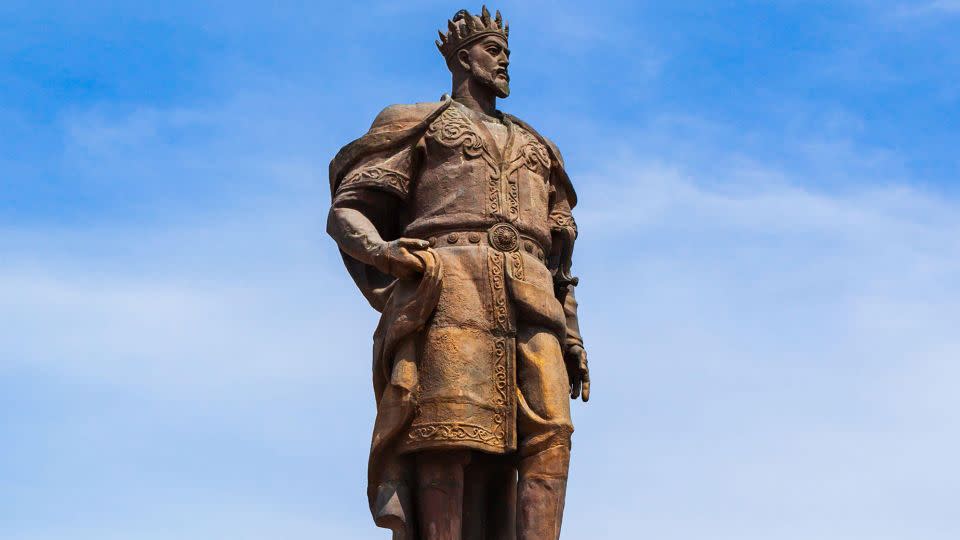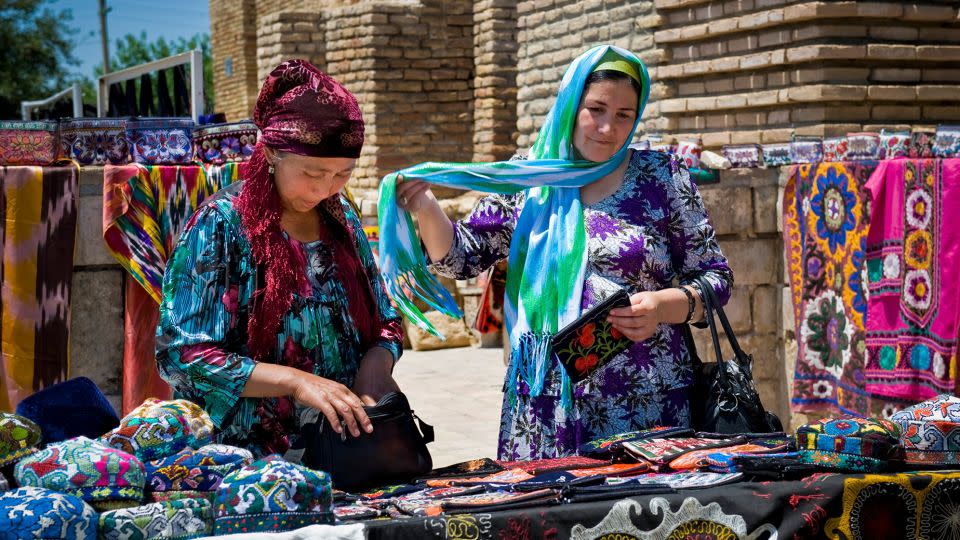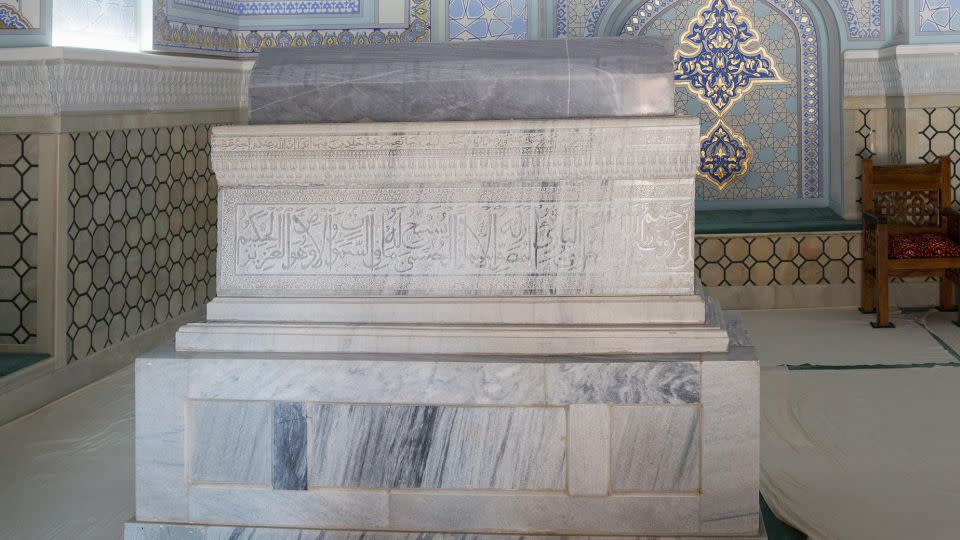Sitting in a green valley over a mountainous pass, historic Shakhrisabz is filled with UNESCO-listed architectural delights
Editor’s Note: This CNN Travel series is, or was, sponsored by the destination it highlights. CNN retains full editorial control over subject matter, reporting and frequency of the articles and videos within the sponsorship, in compliance with our policy.
When you finally get your tongue around the name “Shakhrisabz”, with its guttural ‘kh’ in the middle, the more you say it, the more magical it becomes.
Meaning “green” or “verdant” in Persian, this historic city of roughly 100,000 inhabitants lies in the Kashkadarya region of Uzbekistan, around 55 miles (88 kilometers) south of one of the country’s most popular destinations, Samarkand.
“This is where our history began,“ explains Fairouz, a language teacher and Shakhrisabz tour guide.
The founder of Uzbekistan, Amir Timur – also known as Temur or Tamerlane – was born on the outskirts of today’s Shakhrisabz in 1336.
He was a formidable ruler and is Uzbekistan’s most famous historical figure.
Timur’s style of architecture, aptly named “Timurid” and a key reason visitors come to Uzbekistan, thrived during his rule between 1370 and 1405.
His exquisitely blue and gold-tiled religious schools and mosques are still the envy of the world today, many of which can be seen in the UNESCO-listed historic center of Shakhrisyabz.

Crossing the Takhta Karacha Pass
Getting to Shakhrisabz from Samarkand is only possible by car across the Takhta Karacha Pass, also called Kitob, or Aman-Kutan, where a steep, winding road reaches an elevation of 1,650 meters (5,400 feet) against a backdrop of the Zarafshan mountain range’s snow-covered peaks.
Climbing steadily from Samarkand, past the vineyards and cotton fields, the pass is a busy thoroughfare, out of bounds for coaches and large trucks due to its serpentine bends, with markets set up in many places along the route.
Here, travelers traditionally buy kurt – hardened cheese balls of fermented milk from various animals. An acquired taste, they were historically a durable travel snack popular with the caravans that once crossed this Silk Road pass. (For foreign tastes, the dried nuts and figs on display might be a better option.)
Once across the pass, with the vast green valley stretching below, there is a selection of restaurants with stunning views, offering the ubiquitous shashlik meat skewers for lunch.
Historical center sights
Private organized tours are available through companies such as GetYourGuide, which offers day trips to Shakhrisabz from Samarkand.
”Being a UNESCO World Heritage Site, Shakhrisabz boasts a wealth of architectural wonders that are must-sees for any traveler visiting Uzbekistan,” says the company’s director of sales, Julia Randow.
“The remnants of the Ak-Saray Palace are especially awe-inspiring and provide a glimpse into the architectural style of the Timurid era.”

Today, all that remains of the palace are two crumbling sides of the gate, but what’s left is nonetheless magnificent. The ruins are starkly different from many of the historic monuments in the rest of Uzbekistan, which are so well maintained they look as if they were built yesterday.
”This was Timur’s greatest architectural achievement and took 24 years to complete,” explains tour guide Fairouz of the palace.
“The entrance portal alone was 38 meters high, with the arch some 22 meters wide, all covered in delicate tiling, (leading into) a vast palace fit for the ruler he was. It would have spread through most of the park.”
Less than 500 meters away, a modern statue of Timur himself overlooks the park’s gardens. It’s one of three monuments built in Uzbekistan in honor of the late founder after Uzbekistan gained independence in 1994 following the dissolution of the Soviet Union.
The memorial in Shakhrisabz, featuring Timur standing upright, depicts him looking proud of his place of birth. In Samarkand, the statue features Timur sitting down and ruling in his capital city, while in Tashkent he sits on a horse and points toward his empire.

Past the statue lies the beautiful Kok-Gumbaz Mosque – the local Friday mosque – where ancient maple trees offer worshipers shade. Behind it lies a necropolis that includes the very low-key and intimate tomb that was intended for Timur himself.
He never made it there. Instead, he lies buried in the enormous, golden and magnificent Gur-e-Amir mausoleum in Samarkand.
On the opposite side of the park, with its fountains and basil-lined beds (planted to keep flies and gnats away), lies the turquoise dome of the Dorut Tilovat complex.
Inside is a beautiful madrassa (seminary), tiled all over, and various tombs, including that of Shamsiddin Kulal, a much-revered teacher of Timur. The graves are stunning in their simplicity and stand in stark, and rather gorgeous, contrast to the generally richly decorated mosques and madrassas.
Next door lies a former caravanserai – an inn that throughout history welcomed travelers from afar, offering them and their animals a place to shelter for the night as well as a place to exchange news and gossip as they hawked their wares.
Today it is an events hall and restaurant, still continuing at least part of its original mission.
Along the sides of the park are several handicraft shops where local women quilt traditional cushion covers and jackets, while the nearby Art Gallery of Aziz Akhmedov not only offers an opportunity to buy some local art, both modern and traditional, but also get a great cup of coffee in a predominantly tea-drinking land.
”Shakhrisabz is a relatively small city, but as the birthplace of the 14th-century conqueror, Timur, it holds a rich historical and cultural significance,” says Getyourguide’s Randow.
Seeing its important monuments and learning a bit more about the pervasive Timur will certainly help put all the other sights dotted across Uzbekistan into a historic timeline, furthering the understanding of the destination.
And the drive across the pass is almost reason enough to embark on the side trip – the views are simply grandiose.
For more CNN news and newsletters create an account at CNN.com